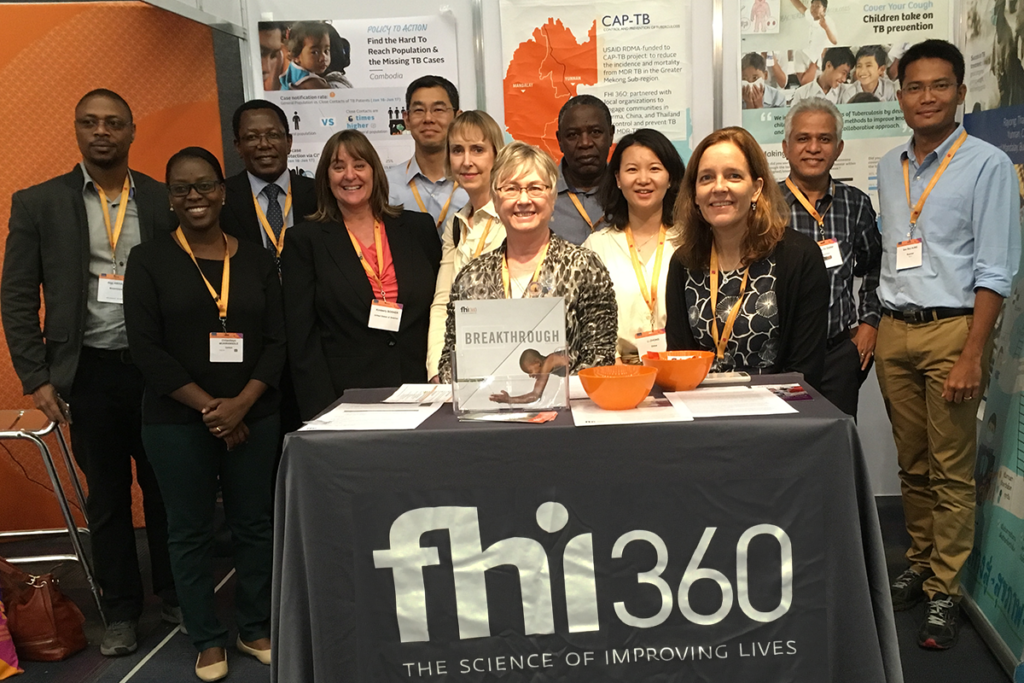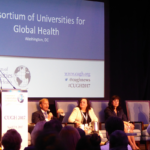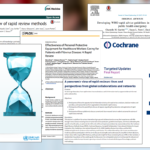Tuberculosis (TB), which in 2016 killed an estimated 1.7 million people, is an ancient disease found in the bones of mummies dug up from Peru. It has evolved with humans, and like other successful organisms, finds ways to avoid death, so it can thrive and spread to the next person. Trying to get ahead of this successful adversary requires pursuing a consistent, aggressive research agenda aided by international collaboration.
More than 95 percent of TB deaths occur in low- and middle-income countries, and just seven countries account for 64 percent of that total (in ranked order): India, Indonesia, China, Philippines, Pakistan, Nigeria, and South Africa. The United States is helping to develop research capacity within each of these high-burden countries.
The first endeavor I describe here presents advancements China is making in its contribution to global TB research. Together with the Beijing Chest Hospital-based team, led by Dr. Xu Shaofa and Dr. Liu Yuhong, our team at FHI 360 co-hosted the 4th China TB Clinical Trials Consortium (CTCTC) symposium at the Mexico meeting. The symposium highlighted recent CTCTC successes, including: establishment of the 19-hospital network, all of which have attained China FDA certification for performing TB clinical research; establishment of monitoring procedures to assure internationally-recognized levels of TB laboratory research capacity; and site staff training and mentoring for junior investigators, as well as ongoing interactions with the international TB scientific and pharmaceutical communities to hone their research agenda.
Led by Dr. Zhang Yao and me, our team works closely with the CTCTC helping them establish network-wide standard operating procedures (SOPs), clinical research quality processes, and training for TB laboratorians. The work is funded by the U.S. Division of AIDS (DAIDS), National Institute of Allergy and Infectious Diseases (NIAID), and National Institutes of Health (NIH), and provides a mechanism for ongoing technical and scientific input into the network’s scientific direction. Initial CTCTC studies include a study of a China-manufactured TB diagnostic skin test which may prove to be more accurate than current tests; a short-course regimen for treating drug-susceptible pulmonary TB; and preparation for recruitment into a high-profile, global study of a new drug and shorter treatment regimen to treat multidrug-resistant TB.
The second endeavor, highlighted during a plenary symposium during the Mexico meeting, showcases the research being done by members of the Regional Prospective Observational Research on Tuberculosis (RePORT) International consortia. RePORT International is also sponsored by the DAIDS/NIAID/NIH, and I serve as Director for the RePORT International Coordinating Center (RICC). RePORT International comprises a group of regional consortia dedicated to doing TB clinical research in high-burden settings, ensuring that it is locally relevant, while contributing to the global TB research community’s needs to find more informative TB biological predictors (i.e., biomarkers).
There are currently five regional RePORT consortia, and they are based in high-burden countries: Brazil, China, India, Indonesia and South Africa. The plenary symposium featured five RePORT speakers and was titled, “RePORT International: Biomarkers of TB and co-morbidities across Brazil, India and South Africa.” Valeria Rolla from Brazil described her team’s work investigating human RNA signals that might offer a clue as to which people with HIV/AIDS are at highest risk for developing active TB. Hardy Kornfield, representing his team at University of Massachusetts as well as collaborator Vijay Viswanathan in Chennai, described the basis for the biological interaction between TB and diabetes, a dual epidemic that is fueling TB across the globe. Nicole Salazar-Austin described the work enrolling children who are household contacts of adult TB cases (to look for biomarkers that might predict their progression to TB disease) she is doing alongside colleagues at the Perinatal HIV Research Unit (PHRU) in Klerksdorp, South Africa, and the PHRU/Johns Hopkins University TB RePORT site there. And finally, Jyoti Mathad discussed what is known, and what is still mysterious, about apparent differences in the rate of TB among women, compared to men, and the work being done to identify the biological basis for predictors of disease and disease complications.
Both TB research endeavors described above highlight the important role coordinated, collaborative research efforts play in generating medical innovations and new evidence. To outsmart such a smart and tenacious adversary, we must continue to explore new opportunities for collaboration especially in high-burden countries.
Photo caption: FHI 360 attendees at the TB Union meeting in Mexico
Photo credit: FHI 360




